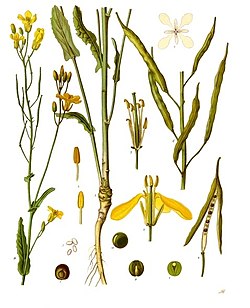| Display title | Biology:Rapeseed |
| Default sort key | Rapeseed |
| Page length (in bytes) | 53,315 |
| Namespace ID | 3026 |
| Namespace | Biology |
| Page ID | 936480 |
| Page content language | en - English |
| Page content model | wikitext |
| Indexing by robots | Allowed |
| Number of redirects to this page | 1 |
| Counted as a content page | Yes |
| Page image |  |
| HandWiki item ID | None |
| Edit | Allow all users (infinite) |
| Move | Allow all users (infinite) |
| Page creator | Jworkorg (talk | contribs) |
| Date of page creation | 02:00, 13 February 2024 |
| Latest editor | Jworkorg (talk | contribs) |
| Date of latest edit | 02:00, 13 February 2024 |
| Total number of edits | 1 |
| Recent number of edits (within past 90 days) | 0 |
| Recent number of distinct authors | 0 |
Description | Content |
Article description: (description)
This attribute controls the content of the description and og:description elements. | Rapeseed (Brassica napus subsp. napus), also known as oilseed rape, is a bright-yellow flowering member of the family Brassicaceae (mustard or cabbage family), cultivated mainly for its oil-rich seed, which naturally contains appreciable amounts of erucic acid. The term "canola" denotes a group of rapeseed... |

